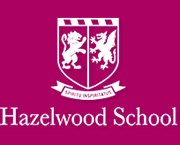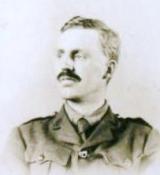
War Memorial
| Captain Robert Benedict BOURDILLON MC AFC | |
|
Intelligence Corps and 27 Squadron Royal Flying Corps Date of birth: 8th September 1889 Date of death: 3rd March 1971 Died aged 81 Unknown |

|
| Robert Benedict Bourdillon was born at "Easebourne", Midhurst in Sussex on the 8th of September 1889 the younger son of Francis William Bourdillon, a poet and translator, and Agnes (nee Watson-Smith) Bourdillon later of "Buddington", Midhurst in Sussex. He was christened at Woolbeding, near Midhurst on the 6th of October 1889. He was educated at Hazelwood School until December 1901 after which he was educated privately. He matriculated for Balliol College Oxford in July 1907 and entered the college on the 10th of October 1908 where he was a founder member of the Oxford University Mountaineering Club in 1909 and served for three years as a member of the Oxford University Officer Training Corps with the Cavalry Unit. He was a member of his College Hockey XI and became their Captain. He graduated with a 1st Class degree in Natural Sciences in 1912. From university he went on to St Mary’s Hospital in London to complete his studies before returning to Oxford where he became a tutor at University College and was working there on the outbreak of war. He left Oxford on the 2nd of August 1914 and was commissioned as a 2nd Lieutenant in the Intelligence Corps on the 6th of August 1914. He was attached to the Headquarters of III Corps on the 8th of September 1914 where he served as an interpreter as he was fluent in French. On the 10th of December 1914 he returned to England on leave and went to the Central Flying School at Upavon from where he applied for a transfer to the Royal Flying Corps, Special Reserve of Officers, on the 12th of February 1915. He was commissioned as a temporary 2nd Lieutenant in the Corps on the same day. He gained his Aero Certificate (number 1976) while flying a Maurice Farman Shorthorn Biplane on the 29th of October 1915. He then returned to the staff and, in concert with Louis Strange, developed a new bomb sight which was little more than some lengths of wire and a few nails but proved highly effective. By mid 1915, with others, he improved the sight. Speed over the ground was measured with a stop watch by two sights taken on one object, the same principle being employed to give the correct angle for release of the bomb. This sight was adopted by both the Royal Flying Corps and the Royal Naval Air Service and was in use on the western front until the end of 1916. He also helped to develop a 40lb phosphorus bomb which also proved highly effective. On the 9th of June 1916 was appointed as an Experimental Officer 1st Class (graded Equipment Officer 1st Class) being promoted from Assistant Equipment Officer. In early 1917 he undertook further training as a pilot and gained his “wings”; he joined 27 Squadron on the 11th of April 1917 which was equipped with Martinsyde Elephants. While he was with them he did much to develop a system for flying above the clouds solely on instruments. He also used “pathfinder” tactics which involved flying ahead of the formation to mark a target in advance of the main bomber force. He was hospitalised on the 2nd of May and returned to the squadron on the 3rd of July, being promoted from Flying Officer to Flight Commander on the 18th of July 1917. On the 27th of July 1917 he led five aircraft from 27 Squadron in an attack on the German Zeppelin sheds at Bercham St Agathe where he descended to a height of fifty feet to release two 112lb bombs to within five feet of the target. The rest of the formation bombed from a height of 2,500 to 3,000 feet, an effective demonstration of his theory of "pathfinding". On the 7th of August 1917 27 Squadron's aircraft were each loaded with a single 230lb bomb in order to attack targets of opportunity behind German lines. Bourdillon overloaded his aircraft with an additional load of an additional four 25lb bombs. During the flight, Bourdillon became lost and flew low enough to read the name of the railway station at Lede. Ascending again to a height of 800 feet he dropped a 25lb bomb close to a train and another within twelve feet of an ammunition shed. He continued on to Melle Station where he dropped his 230lb bomb onto a train which was carrying pit props, blowing two carriages clear off the track. He dropped the rest of his 25lb bombs near a train to the northwest of Melle. He left the squadron on the 28th of August 1917 to join the Home Establishment; He was mentioned three times in the RFC Communiqués of August 1917 He was awarded the Military Cross on the 26th of September 1917, the citation for which appeared in the London Gazette of the 9th of January 1918: - “For conspicuous gallantry and devotion to duty. He has taken part in 17 successful raids many of which were on distant objectives and in unfavourable weather, and has been exceptionally successful in attacking railways, frequently descending to very low altitudes with the greatest determination to make sure of his aim. He has set a very fine example by his courage and offensive spirit” He was promoted to Staff Officer 2nd Grade on the 21st of September 1917 and on the 1st of Feb 1918 he was made Chief Experimental Officer graded as Park Commander to be a Temporary Major while so employed and to Staff Officer Grade One on the 1st of April 1918. He finished the war as a Captain and was awarded the Air Force Cross in the King’s Birthday Honours List of the 1st of January 1918 for his work on bombsight development. After the war he returned to New College Oxford where he achieved a MA in 1919; in 1925 he received MB and BCh and became an MD in 1935. His appointments included Fellow and Praelector in Chemistry, University College Oxford from 1919 to 1921, Dean of University College Oxford from 1920 to 1921, House Physician and later Assistant at the Medical Unit St Mary’s Hospital from 1925 to 1926, on the scientific staff at the National Institute for Medical Research at Hampstead from 1925 to 1946 and Director of the Electro–Medical Research Unit at Stoke Mandeville from 1946 to 1954. He was a member the Eugenics Society in 1937, producing a number of papers connected with research into Vitamin D, and was living at 22 Frognal Lane, Hampstead in London NW3 at the time. He was married at St Mary’s Church, Eastbourne in Sussex to Harriett Ada (nee Barnes) on the 18th of July 1922; they had two sons, one of which was Thomas Duncan, born on the 16th of March 1924. Robert Bourdillon and his son Tom, along with Dr Griffith Pugh developed the oxygen apparatus for the 1953 Everest expedition of which Tom was a member. Thomas Bourdillon was killed on the 29th of July 1956 while mountaineering in Switzerland. He was created a CBE in the King's Birthday Honours List of the 13th of June 1946.He moved to British Columbia in 1962 and lived at Ganges where he died. |
|
| Went on to Privately |
Back